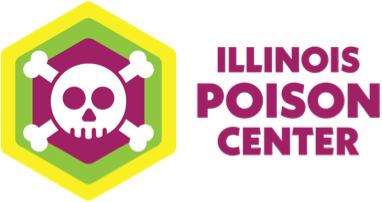Plants
They boost our mood and beautify our homes. Indoor and outdoor plants have many benefits, but some should come with a warning. Certain plants can be poisonous for humans and animals alike. Avoid the plants on the list below if you have children or pets.
There’s no safe way to tell if a plant is poisonous just by looking at it or smelling it. Learning which plants can cause harm can help you protect yourself, your family—especially children—and your pets. See IPC’s list below to find out which plants to avoid.
IPC urges parents and caregivers to keep an eye on children if they are playing in an area with potentially poisonous plants. Also, teach children that they should never put any plants or berries in their mouth without asking caregivers first.
Belladonna or Nightshade
This extremely poisonous plant takes its name from the Italian word “beautiful woman” and is also known as deadly nightshade. The plant produces several highly toxic and potent psychoactive chemicals. All parts the plant are toxic. Parents and caregivers should keep children away from the plant. Children may be drawn to the plant’s sweet, purple-black berries.
- Symptoms: rapid heartbeat, dilated pupils, delirium, vomiting and hallucinations
By handling the plant, you can absorb its toxins through the skin or experience dermatitis.
Daphne
Used in rock gardens, this plant can cause mild to moderate symptoms if ingested and skin irritation/rash if skin exposure occurs.
- Symptoms: In rare cases, burning sensation or ulcers of the mouth, throat or stomach, vomiting, and diarrhea can occur. If the sap gets on the skin, it can cause skin irritation which can range from mild redness to swelling and blister formation.
English Ivy
All parts of this high-climbing evergreen vine are toxic: bark, flowers, fruit, leaves, roots, sap/juice, seeds and stem.
- Symptoms: This plant's leaves and berries can cause mouth, throat and stomach irritation and possibly nausea, vomiting and diarrhea in humans if ingested. The leaves are more toxic than the berries.
Jimsonweed
Also known as thornapple, this summer annual spreads by reseeding itself. The plant’s leaves have a bitter rank odor. All parts of jimsonweed are toxic but especially the seeds and leaves. This plant may be abused for its psychoactive effects.
- Symptoms: thirst, mouth dryness, urinary retention, hallucinations, blurry or double vision, and delirium
Larkspur
Larkspur is both an annual and perennial plant found in woods, fields and home gardens. All parts of the plant—the flowers, leaves, seeds and stems—are toxic if swallowed.
- Symptoms: If ingested in large amounts, the plant’s toxins can cause muscular fatigue, depressed respiration and other central nervous sytem symptoms due to poisoning of specific nerves in the brain.
Plant toxicity can vary based on seasonal changes and field conditions. Young, early plant growth is thought to be more toxic. As the plant matures, it typically becomes less toxic.
Lily of the Valley
Ingesting any part of the plant is highly toxic to humans and animals. Children and pets may be attracted to the plant’s red berries. Ingesting a small amount of the flowers or berries or any other part of the plant can lead to symptoms.
- Symptoms: The toxin can affect nerve function throughout the body and in sufficient amounts can cause gastrointestinal symptoms (nausea, vomiting, upset stomach), central nervous system symptoms (visual changes, confusion), and problems with the heart (low heart rate, irregular heartbeat, low blood pressure and cardiac arrest). Symptoms generally occur within 24 hours.
Monkshood
This highly toxic plant contains a naturally occurring compound called aconite that, if ingested, can poison the central nervous system and lead to death. All parts of the plant—leaves, stems, flower petals, stamens and roots—are toxic. Sudden death from severe cardiac arrhythmias can occur due to the disruption of the nerves that control the beating of the heart.
- Symptoms: If ingested in sufficient amounts, numbness of the mouth, sweating and chills; hypersalivation, nausea, vomiting, diarrhea; and progressive muscle weakness and pain can occur. In severe cases, slow or fast heart rate with cardiac arrest can occur.
Morning Glory
This common field plant contains toxic seeds. Ingesting an excessive amount of these seeds can have several serious effects. The seeds of this plant have been abused for their psychoactive effects.
- Symptoms: abdominal pain, diarrhea, nausea, vomiting, headache, dizziness, tinnitus, chest pain, palpitation, slow or rapid heart rate, high blood pressure, breathing difficulty, rashes, shock, hallucinations, and restlessness
Oleander
A small amount of this plant can be toxic if ingested. All parts of the plant, including the bark and berries, are toxic. Ingesting oleander affects the heart and digestive system.
- Symptoms: serious heart rhythm disorders, nausea, vomiting, cramping, bloody diarrhea, confusion, dizziness, weakness, drowsiness and visual disturbances
Rhododendron
This common landscaping plant contains toxic chemicals in the leaves, flowers and nectar. Toxicity levels are not the same across rhododendron species, but the Rhododendron ponticum is particularly concerning.
- Symptoms: low blood pressure, low heart rate and shock, nausea, increased salivation and vomiting accompanied by dizziness, loss of balance and difficulty breathing
There have been cases of human poisoning are from eating honey that has been contaminated with the pollen from rhododendron by the bees that make it. This a condition known as “mad honey disease.”
Yew
This common evergreen shrub has several toxic parts: needles, bark and berry seeds/pits. Ingesting the leaves weakens the heart and may even cause it to stop, resulting in sudden death.
- Symptoms: vomiting, diarrhea, muscle trembling, lack of coordination, difficulty breathing, nervousness and convulsions. Eating just a few berry seeds/pits can lead to serious poisoning. Death can occur after eating large amounts.
IPC is here to help. If you or a loved one has ingested parts of any of the plants above, contact the IPC helpline at 1-800-222-1222. The call is free and confidential. Toxicology experts are available to answer your questions 24 hours a day, seven days a week.
